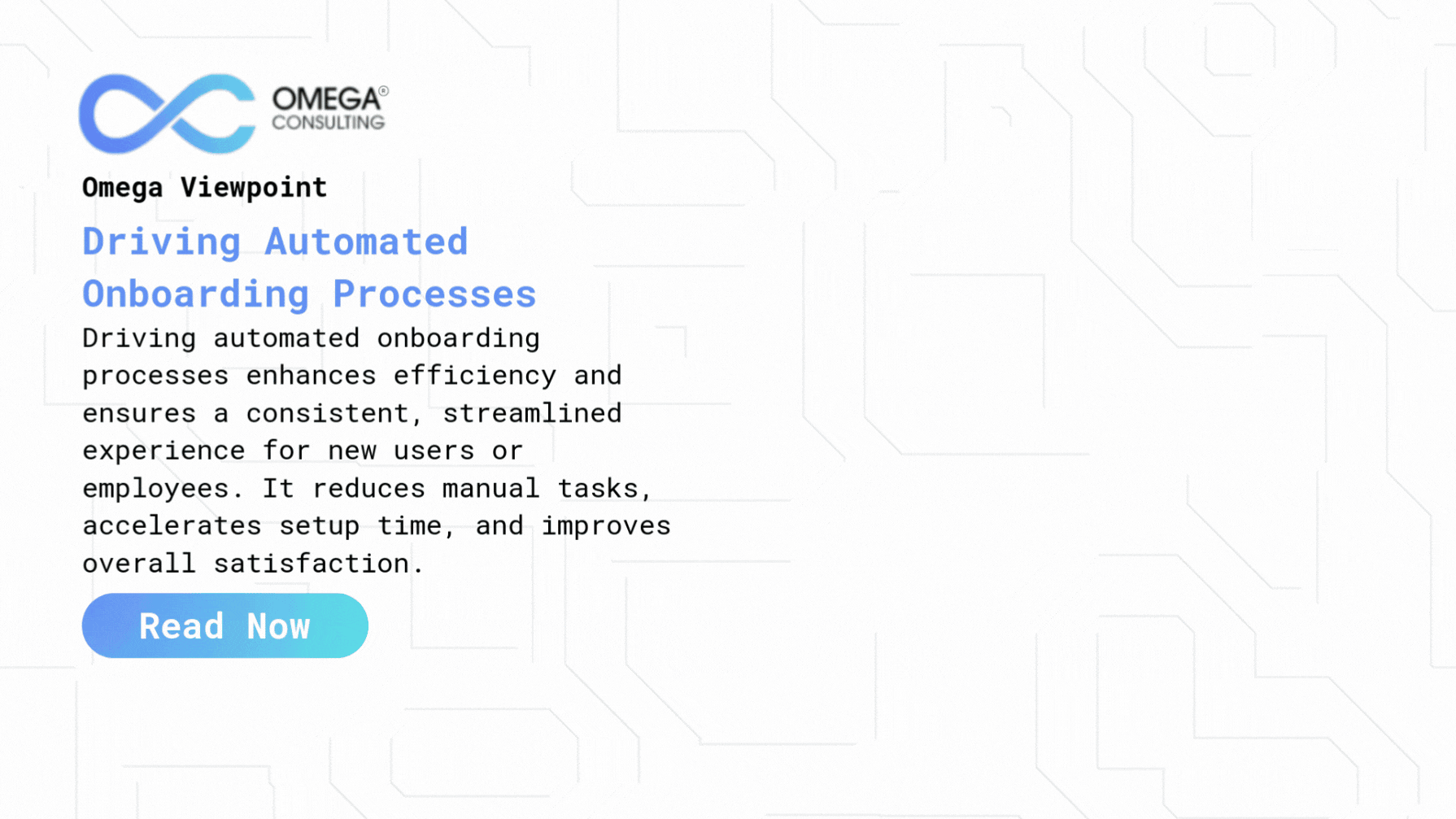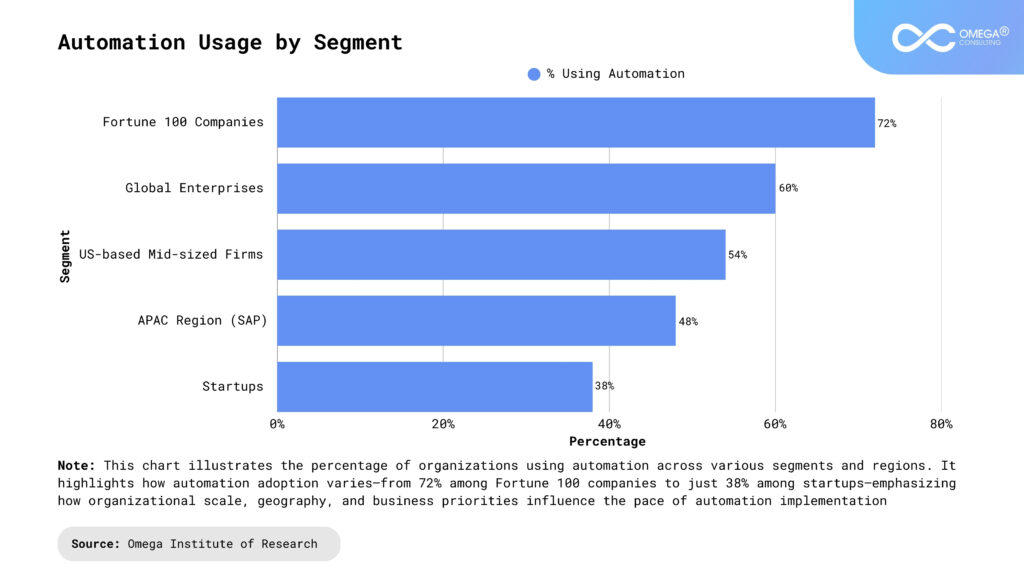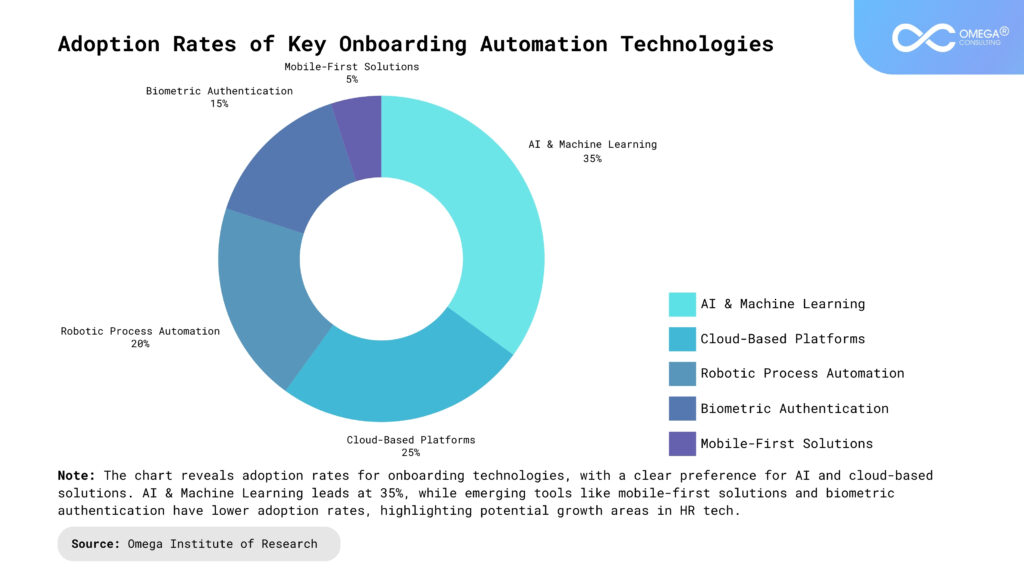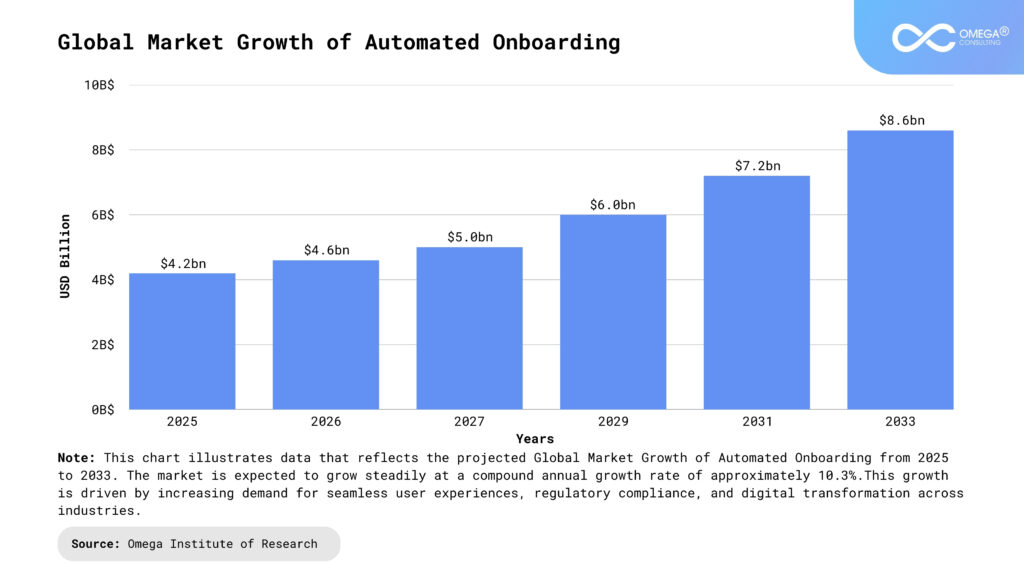- Industries
Industries
- Functions
Functions
- Insights
Insights
- Careers
Careers
- About Us
- Technology
- By Omega Team

In today’s fast-paced workplace, efficient employee onboarding is critical for engagement, productivity, and retention. Traditional manual onboarding marked by paperwork and disjointed workflows often causes delays, errors, and poor experiences for both new hires and HR teams. Automated onboarding transforms this process into a seamless, scalable operation by streamlining workflows, reducing administrative tasks, and ensuring compliance. New hires access personalized portals with paperwork, training, and role-specific resources, ensuring a strong start. Integrated with HR and payroll systems, automation enables real-time tracking, centralized dashboards, and easier compliance through audit trails and automated reminders. Scalable and customizable, automated onboarding supports growth while aligning with company culture shifting focus from manual tasks to strategic initiatives and setting the stage for long-term success.
Components of Onboarding Automation
Organizations can enhance onboarding efficiency and satisfaction by streamlining workflows and personalizing the experience. This includes digital form submissions for documents like tax forms and contracts—digital submissions for IRS Forms W-4 and I-9 streamline compliance with federal mandates. Pre-configured task assignments such as IT provisioning and training schedules, and AI-driven document verification for ID checks and compliance, further reduce delays. Platforms like Workday and ADP integrate directly with U.S. payroll systems such as Gusto to automate tax filings and benefits enrollment. Personalized onboarding portals offer role-specific resources, self-paced training, interactive checklists, and automated messages like welcome emails and milestone reminders. These tools create a faster, smoother experience while cutting admin workload and ensuring consistency. Automating routine tasks lets HR focus on strategic initiatives, improving employee experience. Feedback loops and data analysis refine onboarding over time, reinforcing a culture of success and long-term engagement.

Integration & Compliance
System Compatibility and Regulatory Adherence have become vital components of modern HR technology, enabling organizations to operate more efficiently while maintaining compliance in an increasingly complex landscape. Here are several key reasons why they are so important:
Seamless Integration: Ensuring compatibility with core systems like HRIS, payroll software, and communication tools (e.g., Slack, Microsoft Teams) allows for streamlined operations and improved cross-functional collaboration. These integrations help unify data sources, reduce manual work, and enable a more cohesive digital workplace.
Real-Time Data Synchronization: By enabling live updates and syncing across platforms, organizations can eliminate data duplication and inconsistencies. This not only enhances data accuracy but also ensures that decision-makers always have access to the most current and reliable information.
Automated Compliance: Modern HR systems can automatically generate audit trails and compliance reports, reducing the risk of human error. This automation ensures that organizations meet legal and regulatory requirements without added administrative burden.
Dynamic Regulatory Updates: As labor laws and policies continue to evolve, integrated systems can be updated dynamically to reflect these changes. This keeps organizations aligned with compliance standards and avoids costly penalties or legal issues.
Operational Transparency: Together, system compatibility and regulatory adherence foster a culture of accountability and trust. By ensuring accurate data flow and consistent compliance, companies can improve both internal governance and external reputation.
Key Technologies Driving Automated Onboarding Processes
Modern onboarding is being transformed by advanced technologies that enhance efficiency, personalization, and compliance. These innovations are enabling organizations to deliver seamless experiences to new hires while reducing manual effort and ensuring regulatory adherence.
AI & Machine Learning: Artificial Intelligence and Machine Learning play a central role in automating and optimizing onboarding workflows. AI-driven document verification ensures quick and accurate I-9 Employment Eligibility Verification, IRS tax form validation and fraud detection. Machine learning algorithms personalize onboarding journeys by analyzing employee data to recommend relevant training, content, and communication helping new hires feel engaged from day one.
Cloud-Based HR Platforms: Cloud-based solutions enable real-time access to onboarding tools, resources, and documents from anywhere. These platforms support seamless integration with other systems like HRIS, payroll, and communication tools. They also facilitate global scalability, allowing consistent onboarding experiences across different regions and departments while supporting localization where needed.This flexibility ensures a smooth onboarding experience regardless of location or time zone.
Digital Workflow Automation: Pre-configured task assignments such as IT provisioning like Microsoft Azure & Okta equipment allocation, and OFCCP-compliant training schedules are triggered automatically. Automated milestone emails and checklists align with DOL (Department of Labor) recordkeeping standards, ensuring stakeholders remain informed.
Self-Service Portals & Chatbots: Modern onboarding portals offer personalized, role-specific experiences. Employees can explore company resources, complete forms, and engage with content at their own pace. Integrated chatbots provide 24/7 support for common queries, improving response times and reducing HR workload.These tools empower new hires with autonomy while ensuring consistent guidance and support.
Electronic Signature & Digital Document Management: ESIGN Act-compliant tools like DocuSign enable secure, paperless completion of non-compete agreements, state-specific NDAs, and OSHA safety acknowledgments. Centralized storage ensures compliance with SEC and HIPAA audit requirements.
Learning Management Systems (LMS): Platforms like Cornerstone OnDemand deliver self-paced training on harassment prevention and OSHA safety certifications, integrated with U.S. performance management tools for e.g., Lattice.
Compliance & Audit Technologies: Automated audit trails and compliance reporting ensure organizations remain aligned with labor laws and industry standards. These technologies adapt to changing regulations, notify stakeholders of necessary updates, and reduce the risk of non-compliance through proactive governance.This minimizes legal exposure and builds trust with employees and regulators alike.
Best Practices for Implementing Automated Onboarding
Successfully deploying automated onboarding requires strategic planning, alignment with organizational goals, and a focus on both efficiency and employee experience. Below are proven strategies to maximize the impact of automation while mitigating common challenges:
Align Automation with Company Culture: Automation should reflect core organizational values. In collaboration-driven cultures like Silicon Valley or Austin, embed mentorship into workflows. Tech giants like Salesforce embed Diversity, Equity, and Inclusion training into onboarding, aligning with U.S. workplace norms and federal EEOC standards. Use EEOC-compliant welcome messages, leadership video intros, and interactive DEI-focused training. Reinforce behaviors with gamified Slack or culture quizzes like NLRA-aligned and promote peer introductions via Teams or LinkedIn.
Prioritize User Experience (UX): A seamless UX boosts engagement. Onboarding portals should be intuitive, ADA-compliant, mobile-friendly, and device-accessible. Include auto-fill for IRS Forms W-4/I-9, step-by-step guides, and progress trackers like Asana. Support diversity with multilingual options (e.g., Spanish, Mandarin) and Section 508 accessibility.
Integrate Systems Early: Effective automation depends on system interoperability. Auditing existing HR, IT, and payroll systems helps identify integration points. APIs or middleware can unify data flows, eliminate silos, and ensure accurate, synchronized onboarding actions.Enable single sign-on (SSO) to simplify access across systems. Ensure real-time data syncing to avoid lags or duplication in employee records.
Balance Automation with Human Interaction: Automation should complement—not replace—human touchpoints. Routine tasks and FAQs can be handled by chatbots, while managers or HR should conduct scheduled check-ins and handle complex issues to preserve connection and empathy.Assign onboarding buddies to help navigate informal aspects of work. Host virtual meet-and-greets to foster early relationship-building in hybrid setups.
Leverage Data for Continuous Improvement: Track metrics like time-to-productivity benchmarked against U.S. Bureau of Labor Statistics averages and new hire satisfaction via platforms like Gallup. Use post-onboarding surveys compliant with NLRB guidelines to uncover pain points. Visualize insights through Tableau dashboards. Benchmark data against U.S. industry standards such as SHRM’s HR benchmarks.
Train Stakeholders: HR teams need hands-on training in the U.S. HR analytics tools such as Visier, system troubleshooting for platforms like Paylocity, and managing ADA and FMLA exceptions. Train managers on their role in workflows, such as approving I-9 verification or guiding early career development under DOL guidelines.

Emerging Technologies in Automated Onboarding Processes
Artificial Intelligence (AI) and Machine Learning: AI is revolutionizing onboarding by automating tasks like document verification, personalized training, and providing real-time support via chatbots. This not only reduces the HR workload but accelerates the onboarding process, with some companies reporting onboarding speeds that are 50% faster than traditional methods. Additionally, AI can analyze data to provide actionable insights, enabling organizations to continuously optimize their onboarding strategies. The personalization aspect powered by AI enhances employee engagement and retention, with studies showing up to an 82% improvement in new hire retention.
Robotic Process Automation (RPA): RPA automates repetitive tasks that are typically time-consuming, such as data entry, background checks, and account provisioning. By automating these steps, HR teams can focus on higher-value activities like employee engagement and support. RPA significantly reduces human errors, leading to more accurate and efficient onboarding processes. Additionally, it accelerates the overall process, ensuring that new hires get access to the necessary tools and systems faster, which enhances the onboarding experience and cuts down operational costs.
Cloud-Based Onboarding Platforms: Cloud-based platforms centralize and streamline the entire onboarding process. These platforms can automate document management, training assignments, and compliance tracking, making it easier to manage the complexities of onboarding across different locations. Cloud solutions also allow for scalability, making it easy for companies to handle any number of new hires, whether they are located remotely or in the office. The flexibility and accessibility of cloud-based systems enable organizations to provide a smooth, seamless onboarding experience that supports remote and hybrid workforces.
Biometric Authentication: Biometric authentication, such as facial recognition or fingerprint scanning, enhances security and reduces fraud during onboarding. By verifying a new hire’s identity using unique physical traits, organizations can ensure compliance and mitigate the risks associated with traditional manual identity verification processes. This technology speeds up the onboarding process, allowing new employees to get started instantly. For businesses, it can reduce onboarding costs by up to 90% and help maintain a secure, fraud-free process from the start.
Mobile-First Onboarding Solutions: Mobile-first onboarding solutions allow companies to engage new hires through smartphones or tablets. These solutions enable users to complete essential steps like document capture, e-signatures, and compliance training on their devices, making the process more accessible. Mobile-first onboarding is especially valuable for reaching remote or underserved populations. This approach increases completion rates, reduces onboarding time, and offers flexibility, allowing employees to complete their onboarding tasks at their own convenience, regardless of their location.

Challenges in Automated Onboarding Processes
Manual Processes and Paperwork Remain: Despite automation tools, many organizations still rely on manual forms, spreadsheets, and emails, slowing the process, increasing errors, and creating extra work for HR. Delays in providing resources can negatively affect new hires’ first impressions and productivity.The reliance on paper-based systems also hinders scalability, particularly as companies expand. This can lead to inefficiencies and longer onboarding times, reducing the overall effectiveness of the process. Managing paper-based records increases the risk of lost or misplaced information, further complicating the process.
Integration Issues Between Systems: Seamless integration between HR, IT, payroll, and compliance systems is often lacking, leading to fragmented workflows, duplicated data, and miscommunication. U.S. retailers struggle with integrating legacy POS systems with modern HR platforms like Paycom, delaying hourly worker onboarding. These issues delay equipment provisioning, access granting, and compliance checks, hindering the onboarding timeline. When systems fail to communicate effectively, HR and IT teams are forced to manually intervene, adding extra workload and extending the time it takes for new hires to become productive. These delays can lead to frustration and disengagement among new employees. The lack of integration can also create data silos, making it difficult to maintain accurate and up-to-date information across departments.
Limited Visibility and Tracking: Without centralized dashboards or real-time analytics, HR teams struggle to monitor progress and identify bottlenecks. This can result in incomplete tasks, missed deadlines, compliance risks, and difficulties in providing timely support or intervention.When key steps are delayed or missed, it can negatively impact employee satisfaction and retention, with new hires left feeling unsupported during their transition. A lack of visibility also makes it harder to measure the effectiveness of onboarding programs and make data-driven improvements.
Over-Reliance on Technology and Lack of Personal Touch: Excessive reliance on technology can make onboarding feel impersonal, missing opportunities for human interaction, mentorship, and cultural integration. This may lead to lower job satisfaction, slower adaptation, and higher turnover among new employees.The balance between automation and personal interaction is crucial, as new employees often need guidance and support beyond what technology can offer.Without meaningful connections, new hires may feel disconnected from the company’s culture and mission, affecting their long-term engagement.
The Future of Automated Onboarding Processes
AI-Driven Personalization and Automation: The future of automated onboarding is powered by artificial intelligence and machine learning, enabling highly personalized and adaptive journeys. U.S. firms like IBM use AI to tailor onboarding for veterans transitioning to corporate roles, linking training to VA skill certifications. AI analyzes new hires’ backgrounds, skills, and preferences to create tailored training paths, recommend resources, and provide real-time support. This shift from one-size-fits-all to individualized onboarding accelerates integration, boosts engagement, and improves retention, as employees feel recognized and supported from day one.
Seamless Cross-Department Collaboration: Automated onboarding is evolving to involve IT, sales, compliance, and executive teams. Integrated workflows and shared dashboards ensure tasks like equipment provisioning, access rights, and compliance training are triggered automatically and tracked transparently. This reduces onboarding delays by up to 60%, eliminates manual handoffs, and ensures a consistent experience across departments and new hires.
Enhanced Compliance, Security, and Analytics: Automation strengthens compliance and data security by digitizing document management, using e-signatures with audit trails, and enforcing role-based access controls. Automated reminders and policy acknowledgments help meet regulatory requirements and reduce legal risks. Advanced analytics provide real-time visibility, identify bottlenecks, and enable continuous process improvement.
Immersive and Engaging Experience: The next wave of onboarding uses VR/AR technologies for immersive experiences like virtual office tours and team-building activities. Amazon’s AR simulations train warehouse employees on OSHA safety protocols, reducing workplace injuries by 25%. Gamification, collaborative learning, and mobile-friendly platforms engage new hires and foster a strong company culture in remote or hybrid environments.
Human Touch Remains Essential: While automation and AI streamline and personalize onboarding, the need for meaningful human interaction remains. The future of onboarding will blend digital efficiency with personal connections like mentorship, team introductions, and cultural integration, ensuring a holistic and memorable experience for every new hire.

Conclusion
Automated onboarding is transforming workforce management by improving efficiency, compliance, and employee engagement. Technologies like AI, cloud platforms, and RPA streamline workflows, reduce admin work, and ensure seamless global integration while enhancing compliance through real-time data and automated audits. The U.S. automated onboarding market is projected to grow by 14% CAGR through 2030 (Forrester), driven by SEC data governance rules and hybrid work models. The global market is expected to surpass $8 billion by 2033, fueled by remote work and regulatory complexity. Innovations like VR/AR training and biometric authentication lead adoption in Asia-Pacific and North America. Despite its benefits, human interaction remains vital for engagement and retention. Balancing automation with mentorship and cultural integration is key. Automated onboarding is now a strategic necessity, merging efficiency with a personalized, engaging employee experience.
- https://www.gartner.com/en/human-resources/insights/hr-technology-hype-cycle
- https://www.shrm.org/topics-tools/employment-law-compliance/labor-relations
- https://hbr.org/search?term=onboarding
- https://www.statista.com/outlook/tmo/digital-services/hr-solutions/hr-software/worldwid
Subscribe
Select topics and stay current with our latest insights
- Functions